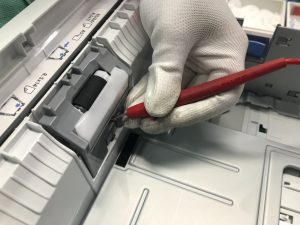Sublimation printing has revolutionized the world of custom printing, offering vibrant, long-lasting designs on a variety of substrates, from apparel and accessories to promotional items and home décor. If you’re new to sublimation or looking to expand your knowledge, this comprehensive guide will take you through everything you need to know about the sublimation printing process, materials, equipment, and applications.
Understanding Sublimation Printing A Sublimation Guide
Sublimation printing is a process where solid dye particles are transformed into a gas state under heat and pressure, bypassing the liquid phase. The gas permeates the surface of the substrate and solidifies upon cooling, resulting in a permanent, high-definition print with exceptional color vibrancy and durability.
Essential Components of Sublimation Printing
- Sublimation Inks: Specialized sublimation inks contain dyes that sublimate when exposed to heat. These inks are formulated to produce vibrant colors and excellent color retention on polyester or polymer-coated substrates.
- Sublimation Printer: A sublimation printer is specifically designed to accommodate sublimation inks and produce high-quality prints. Inkjet printers equipped with sublimation ink cartridges or bulk ink systems are commonly used for sublimation printing.
- Sublimation Paper: Sublimation paper acts as a carrier for the printed design during the transfer process. It features a special coating that prevents the ink from bleeding and ensures crisp, detailed prints.
- Heat Press: A heat press is used to apply heat and pressure to the printed design, facilitating the sublimation process. It ensures proper ink transfer and adhesion to the substrate, resulting in a permanent bond between the ink and the material.
Sublimation Printing Process
- Design Preparation: Create or select a design using graphic design software and print it onto sublimation paper using a sublimation printer and inks.
- Sublimation Transfer: Place the printed design face-down onto the substrate and secure it with heat-resistant tape. Position the substrate and paper assembly in the heat press according to manufacturer instructions.
- Heat and Pressure Application: Set the heat press to the recommended temperature and time settings for the specific substrate and ink being used. Apply heat and pressure to the assembly, allowing the sublimation inks to vaporize and permeate the surface of the substrate.
- Cooling and Finishing: Once the transfer process is complete, remove the substrate from the heat press and allow it to cool. Peel off the sublimation paper to reveal the vibrant, permanent print.
Applications of Sublimation Printing
Sublimation printing offers endless possibilities for customization across various industries and products, including:
– Apparel and accessories (e.g., t-shirts, hats, socks, bags)
– Home décor items (e.g., pillows, blankets, mugs)
– Promotional products (e.g., keychains, mouse pads, coasters)
– Signage and banners
– Personalized gifts and keepsakes
Tips for Successful Sublimation Printing
– Use high-quality sublimation inks, paper, and substrates for optimal results.
– Calibrate your sublimation printer and heat press to ensure consistent color reproduction and ink transfer.
– Experiment with different substrates and designs to discover new creative possibilities.
– Follow manufacturer guidelines and recommended settings for temperature, time, and pressure to avoid overheating or under-transferring.
In conclusion, sublimation printing is a versatile and efficient method for producing vibrant, custom prints on a wide range of substrates. By understanding the process, materials, equipment, and applications involved, you can unlock the full potential of sublimation printing and unleash your creativity in various projects and endeavors.


